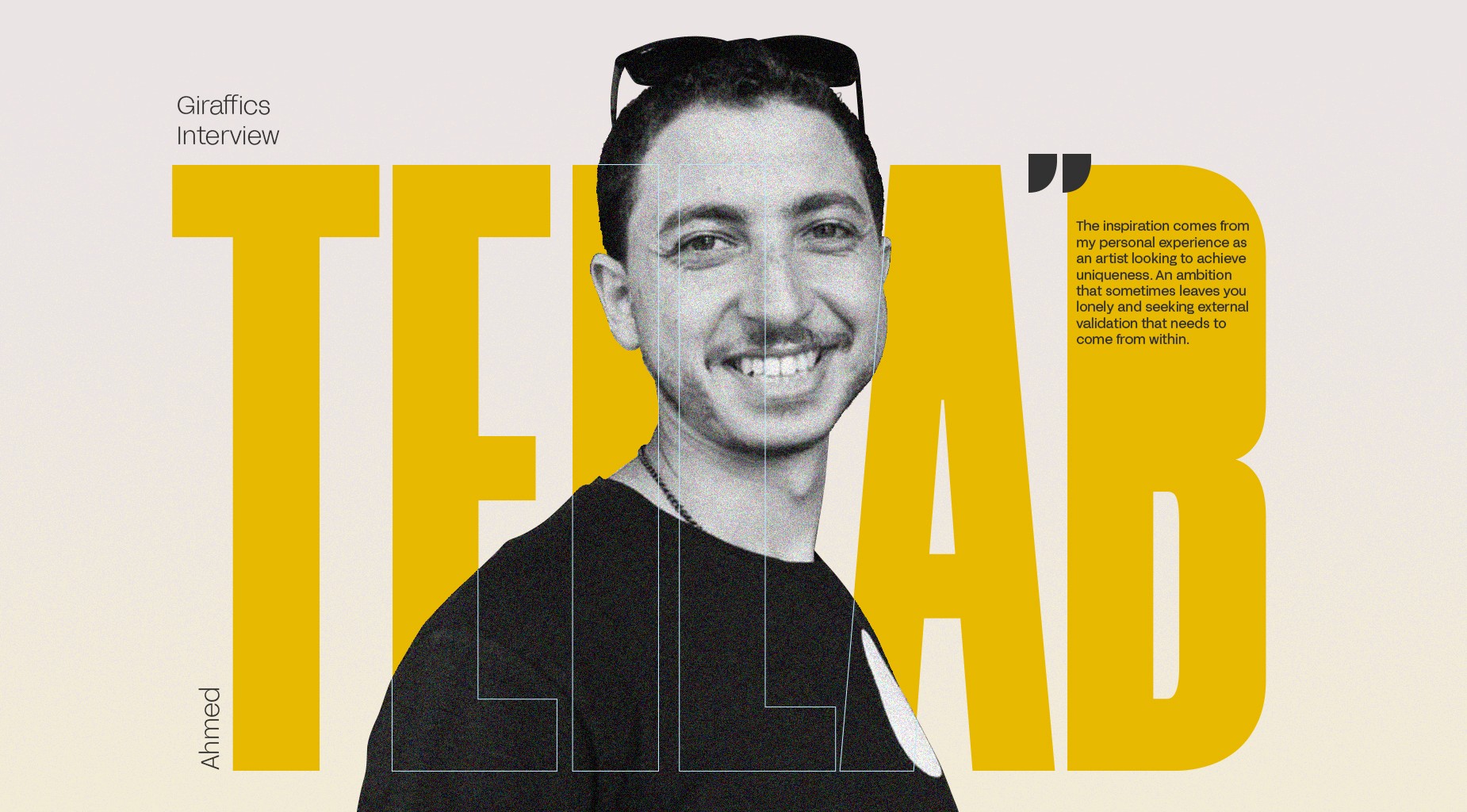
Apr 23, 2024
Animated Anthologies: A Behind-the-scenes Look with Director Ahmed Gamal.
This interview was conducted by giraffics producer, Reem Khalifa
As a highly sought-after visual development artist, Ahmed Gamal has carved a remarkable path in the animation and post-production industry. His impressive resume boasts experience as an art director, leaving a lasting impression on every project he touches. As a long-time collaborator with Giraffics, Gamal's artistic vision shone through on projects like "Kizazi Moto," where he served as the lead art director. The interview below gives you the bits and pieces of Gamal’s journey.
1-How did working on "Kizazi Moto" influence your artistic perspective and approach?
Working on "First Totem problem" helped me dive deeper into an artistic self-exploration journey. Most of the projects I worked on before Kizazi Moto were all about what the producers wanted or were limited by budget, time, or any other limiting factors. In Kizazi Moto, we had full artistic freedom and open resources. This made us build the world of 1TP and experience it in various artistic and technical approaches. It was more of a learning journey, learning about myself as an artist and learning from all of the talented artists I worked with. Each one of the team had a unique approach to creating something or finishing a task. And I made it my job to observe and learn from them rather than limit them with my personal approach.

2-How did "Kizazi Moto" impact your creative process, and how do you apply those lessons in your current work?
As I said, we had plenty of time to explore and experiment. One major thing we did was invent a lot of world elements, even if these elements didn't make it to the final film. We worked on tons of buildings, vehicles, characters, props. And although we didn't use most of them, it helped us understand the world we are creating, and it helped the world mechanics that made it to the film be believable and livable.
3- What was the biggest challenge in "totem"?
The biggest challenge in Totem was to produce a new, fresh artistic style that expresses rich Southern African culture. We worked closely with the direction team to generate new ideas based on existing African visual keys like patterns, architecture and color schemes.
4- How did collaborating with artists from diverse backgrounds around the globe influence the creative approach in "Totem" ? Did this collaboration lead to any unexpected creative directions or challenges?
Everyone had their unique take on African culture. So we didn't end up with the typical colorful patterned visuals we see everywhere about Africa.
5-Which role do you prefer: art director or a director?
I believe both roles have a lot of intersections, especially in animation. I enjoy doing both at the same time because it helps my vision stay consistent while having the freedom to make artistic changes along the process
6-Can you share a pivotal moment or experience that contributed to your growth as an art director?
There is no exact moment that affected my career as an art director. I worked in live action post-production and production for a long time in positions like color grading, compositing, set design, and assistant directing. And all the collective experience I had pushed my career as an art director in animation.
7-What inspired your improvements in artistic viewpoint, and how do you continue to evolve in your role?
Continuously exposing myself to different art forms and different life experiences that are not art related. The collaboration between both approaches generates new thoughts and concepts.
8- What is your favorite movie, and how has it influenced your creative vision?.
There is no one favorite movie, but a mix of anime and hollywood classics.
9- Can you tell us about the first video you directed? What were the unique challenges and rewards of that experience?
The first video I directed was a short animation called "The Grand Night" that was produced by Giraffics. The story is based on an Egyption folklore puppet show. Of course it had artistic challenges but the main personal challenge for me was to work with a team of experienced artists while I was brand new in the animation field. But fortunately, everyone was humble and we managed to produce the animation in the best way possible
10-What are your next steps or projects, and how do you envision the future of art direction in Egypt?
My next step is experimenting with new animation styles and techniques while telling local stories. And I believe this is the future of animation in Egypt. We have a lot to tell and a lot to discover.
Summary:
Kizazi Moto’ First Totem Problems has been a pivotal point in giraffics’ journey and as a life-long companion to giraffics, Ahmed Gamal was gladly not spared from being an integral hand in the creation of this short film.
Gamal shared that working on the First Totem Problems allowed him to delve deeper into his artistic journey and explore his full artistic capabilities by playing with different techniques and learning from diverse artists on set. Every prop, character, building, and element helped in developing his creative process and understanding the world he was building for the film. Yet, that didn’t go without a challenge. Gamal shared that it was quite tricky to build South African visuals and art with a fresh and new artistic style. Despite that, having multiple artists from diverse backgrounds allowed everyone to pitch in their unique take and build something truly unparalleled.
The interview later shifted to Gamal’s career path, sharing that all of his collective experience whether working as a director, art director, or in post-production pushed him far and helped him unleash his artistic potential. Before the curtains rise, Gamal shared that the future is now when it comes to animation in Egypt and no better time than for local stories to take the central stage and be discovered and uncovered.

